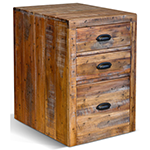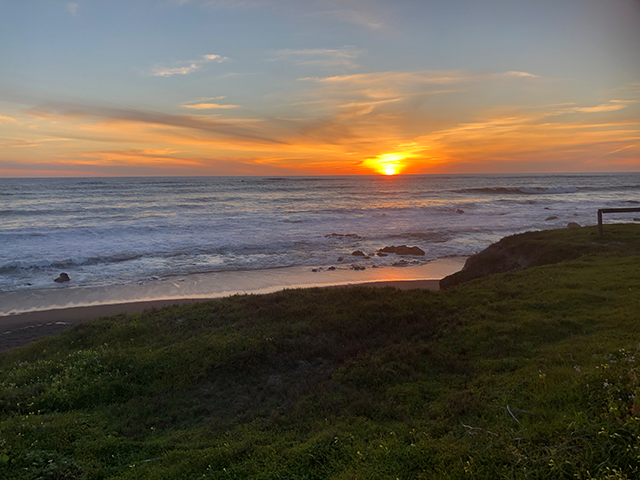
Welcome to Safe Harbor Presbyterian Church
Where the love of Christ builds a harbor of acceptance, inspiration,
Fellowship, service and joy.
You enrich our worship with your presence.
"When we say welcome we mean it!"
Sound Recording only - Podcast
It is not possible to pass the collection plate at our live home church.
We do need your contributions. Please sent your check, made out to Safe Harbor Presbyterian Church to:
Safe Harbor Presbyterian Church
c/o Monty Rice
1298 Warren Rd.
Cambria, CA 93428
If this is your first time here, WELCOME.
If you have a prayer request, please send to:
Safe Harbor Presbyterian Church-PCUSA
2700 Eton Rd. • Cambria, CA 93428
Call or text 805.395.1521
Info:
The Gathering
At the tolling of the bell, please quietly prepare your heart for worship.
Welcome and Announcements Elder Tom Cochrun
Meditation Music Deborah Farrand
Hymn # 95 (sung through several times) Prepare the Way of the Lord
† Call to Worship: The Lighting of the Candle of Love (In unison) Liturgist
As we gather around the Advent Wreath today, we rejoice that Advent is a time of prayer and of open hearts when we sing songs of joy. Advent is a time of worship—the moment when the busiest of us pause in wonder. Christmas comes when God comes to us in love through Jesus Christ and fills us with love for all humankind.
Isaiah 61:1-6 Pastor Eugenia
The Lighting of the 3rd Advent Candle: Love Pastor Eugenia
 We light this candle to proclaim the coming of the light of God into the world. With the coming of this light there is love. Such great love helps us to love God and one another. (The lighting of the Hope, Peace and Love candles.)
We light this candle to proclaim the coming of the light of God into the world. With the coming of this light there is love. Such great love helps us to love God and one another. (The lighting of the Hope, Peace and Love candles.)
Prayer of Adoration (In unison )
O God, we thank you that Jesus showed your love for every person—babies and children, old people and young, sick people and those who were strong, rich people and those who were poor. Come to us in the Advent season, and give us love in our hearts for all people. Amen.
†Opening Hymn # 85 vv. 1,2,3. Light One Candle to Watch for Messiah
Prayer of Confession (In unison, from Isaiah 61)
Dear Father of Lights you have given us the Messiah, the King of Glory whose light will banish darkness. Though we gratefully receive, we ask how have we helped proclaim good news to the poor, do we help bind up the brokenhearted, do we release from darkness those who are prisoners? In our hearts and lives are we comforted by the oil of joy instead of mourning, do we wear a garment of praise instead of a spirit of despair? Please hear our personal silent confessions... (In unison) Lord help us to love justice and to live into righteousness. We pray these things in the name of your son, the Prince of Peace. Amen.
Assurance of Pardon New Creations in Christ
†The Sharing of the Peace
The Word
Hymn of Preparation #452 Open the Eyes of My Heart
Leader: Listen for the Word of God.
People: Our ears are open and our hearts are ready to receive.
Scripture: John 1:6-9, 19-28
Leader: The Word of the Lord.
People: Thanks be to God.
Meditation: Bennet and the Chocolate Angel Rev. Eugenia Gamble
Hymn of Response #94 Now the Heavens Start to Whisper
The Prayers
Call to Prayer: Hymn #78 (vv. 1 &3) You Thirsty Ones, Come
Prayers of the People: The O Antiphons
-and-
Hymn #91 (After each of 7 prayers) Come, Come Emmanuel
[Note: The O Antiphons started as a part of Christian Advent worship in the eighth century. They were first used as meditation starts, one per day for the last seven days of Advent. In Latin, the first letters of their seven images of Christ – Sapientia (Wisdom), Adonai (Lord), Radis Jesse (Root of Jesse), Clavis David (Key of David), Oriens (Radiant Dawn), Rex Gentium (Ruler of Nations), and Emmanuel (God with us)—make up a backward acrostic, spelling erocras: ―tomorrow I will [come].‖ This version and the explanation come from The Book of Common Worship (PCUSA). It is in the form of a bidding prayer. The pastor prays a short prayer and the congregation responds after about 10 seconds of silence. We will sing our response, Hymn #91 Come, Come Emmanuel. It is a short refrain that we will sing once after each of the seven prayers.
The Lord’s Prayer
Response to Prayer, Hymn # 710 We Are an Offering
Prayer of Gratitude and Dedication
The Parting
† Hymn of Parting # 92 While We Are Waiting, Come
† Charge and Benediction
Postlude
After the service, we hope you will join us for Virtual Fellowship Time.
We invite you to join our Advent Study with Pastor Eugenia,
each Thursday at 4 pm PST.
CURRENT PRAYER LIST
Members of our community that are lonely, hungry and sick.
If you would like to support the work of Safe Harbor Church financially:
Tax deductible checks may be made to Safe Harbor Presbyterian Church.
During our period of isolation, please mail checks to:
Monty Rice 1298 Warren Road Cambria CA 93428
WHEN WE SAY “ WELCOME! ”, WE MEAN IT!
|
Mentoring Pastors The Rev. Eugenia A. Gamble
Music Team Deborah Farrand Wink Farrand Michael Green Liturgists’ Coordinator Patti Ropp
|
Leadership Tom and Lana Cochrun Monty and Julia Rice Patti Ropp Michelle Costa Jeff Rodriguez |
Worship Script for Hanging of the Greens The Meaning of the Service In other times we would have gathered in our sanctuary to prepare all of the special decorations that have come to mean so much to us. These decorations remind us of holy times and holy things. They mark the rythmns of life and give us a touchstone of steadiness, expectation and beauty in the midst of a season that has been overtaken by commerce. All around us trees go up on labor day and flashy adds work on us subconsciously to lead us to want things we do not need and over spend trying to make our loved ones feel special or to keep up with neighbors and friends. Our sanctuary as it slowly dresses during Advent, helps us to remember that the heart of the season is the most astounding of all miracles: God chose to come to us in human flesh to live with us, to die for us and to rise again to show us the way to live eternally.
The service of hanging the greens developed both to teach congregations about the symbols and to invite us to be more mindful and deliberate in how we live out the season. This year, as we continue to wrestle with a virus we cannot see, our homes become our sanctuaries. So during worship today, members of the congregation will explain the different meanings of the decorations that we commonly use so that we can still share in this sweet quiet ritual together.
The Wreath
Many of us put wreaths of evergreens on our doors during the holiday season. These wreaths originated as signs of unending life and victory in pagan celebrations. As Christianity began to spread in Europe, they took the custom as their own, realizing that Christ is the ultimate victor and entryway into eternal life. So this Advent season, as you place a wreath on your door, and every time you enter, remember your salvation in Jesus. May your wreath be an opportunity to recommit your life to Christ each time you see it.
The Candles on the Table
If we were able to worship together, at this point in the service we would light a special candle to put on the communion table, our place of family feeding and celebration. This year we light a candle to place on our dining table, our place of feeding and celebration. Candles have been used in religious worship for centuries. The ancient Tabernacle and Temple held lamps that burned continually to remind the people of the presence of God and God’s leading of the people from bondage in Egypt with a pillar of fire. As Christians we remember those miracles and add to them our belief that Jesus Christ is the light of the world, the light that leads us from bondage and illumines the true way to live.
The Holly and the Ivy
The ancestors understood holly and ivy, as evergreens, to symbolize eternal life. The prickly leaves of the holly represent the crown of thorns placed on Jesus’ head at crucifixion and the red berries represent his blood shed for us all. This year when you see the holly and ivy, or hear the beautiful hymn The Holly and the Ivy, be reminded that Jesus loved you so much that he was willing to die just to be close to you forever.
The Evergreens
Many traditions involving evergreens originated with the Druids, Celt, Norse and Roman civilizations which celebrated the winter solstice around December 21st. The color green represents eternal life and because these plants stay green all year they became associated with God’s regenerative power. They brought evergreens into their homes and placed them on their hearths as signs of devotion. Early church leaders were intent on stamping out pagan beliefs and often objected to the use of greens in homes due to the pagan associations. Gradually, however, they realized that the people loved the symbols and used them to teach about the unchanging character of God. This year as you place garlands or greens in your home, let them remind you that you can trust God’s never changing promises and the Jesus’ love for your will never change.
The Poinsettia
Many of our Advent and Christmas symbols originate in Europe. The Poinsettia is a symbol native to North America and began in Mexico. When missionaries arrived in Mexico they found the plant growing profusely. They used it as a teaching tool to help the people they met understand the Christian faith. The star shaped blossoms symbolize the holy star that arose over Bethlehem at Jesus’ birth. The center represents the crown of thorns. The red color represents the blood of Jesus and the power of the Holy Spirit. So this year when you look at your poinsettia, remember the star that led the Magi to Jesus and thank God for leading you to Jesus as well.
The Christmas Tree
Today Christmas trees are often the center or our celebrations. Glittering with lights they are a part of the beauty and meaning of Christmas. Traditionally trees were brought into homes on Christmas Eve and lit when people returned home from worship. They remained during the season of Christmas which ends with Epiphany on January 6th. Now many of us put our trees us earlier. The desire to decorate a tree is very ancient. Ancient non-Jewish peoples in the Old Testament decorated trees with gold and candles to celebrate fertility and prosperity. Jeremiah hated this (Jeremiah 10:2-5). Still many other cultures adopted this practice as well. Seven hundred years after the birth of Jesus, Pope Gregory sent a missionary named Winfred to England. He later became known as St. Boniface. When he arrived he found a group of pagans worshiping around an oak tree. He was outraged by this and took the ceremonial ax and cut down the tree. Miraculously, as soon as he did that the gathered group’s outrage began to fade when they saw a small evergreen tree rising from the stump of the oak. Winfred used this opportunity to teach about how Jesus brings life from death. It was another seven hundred years before Martin Luther, walking in the woods on a winter night, saw a tree glistening in the woods from moonlight on icy branches. He had a profound religious experience in that moment and brought a fir tree into his home, lit it with candles and topped it with a star to remember how God comes to us in unexpected ways and just the right moment. So when you decorate and light your tree this year, let it remind you of God’s wondrous love and how God reaches out to you in ordinary life to give you hope and peace.
The Christmas Bells
Bells have been rung from ancient days to announce special events and to call people to awareness. Bells are rung to announce worship, the tell a community that someone has died or that a couple has married. The Christmas bells are often rung by children in the household, since in many cultures children are considered to be more aware of spiritual things. The Christmas bells call us to worship and remembrance of all that God has done for us. The remind us that our deepest desires have been met in Christ. As the old carol says, the hopes and fears of all the years are met in him tonight. So this year, ring your bells. The worst is over. The healing has already begun. Now we know that we are early in Advent. That the celebration and preparation are not yet complete, so we will wait to ring our bells until Christmas eve. Still, if you have a bell that you can place in a prominent place in your home, do that today, because, not matter what is happening around us, no matter what is happening inside of us, Christ is on the move. God is on the way bringing a new thing to life in you, with you and for you. So rejoice.



